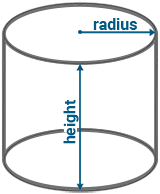Cisterns are watertight containers to protect and store drinking water, but sometimes the water from a cistern may not be safe to drink. If this happens, you need to fix the problem and then clean and disinfect the cistern so it's safe to use again.
How could water in a cistern become contaminated?
Germs can get into a cistern and contaminate the water through:
- damage to cistern parts such as collars, lids, fill ports, or screened vents
- damage to the structure
- overland flooding
After you know the problem, you need to fix it before you clean and disinfect the cistern.
When do I need to clean my cistern?
You need to clean the cistern to remove sediment and other contaminants. It's a good idea to clean your cistern at the following times:
- at least 1 time a year to remove sludge and sediment buildup
- when the water looks, smells, or tastes different than usual, and a test tells you it's contaminated
- when contaminants—such as rodents or water from overland flooding—get in the cistern
- after the cistern is installed and sediment needs to be removed from the bottom of the tank
How do I clean my cistern?
Before you start cleaning a cistern, arrange for the services of an approved water hauler. You need clean, safe water to clean and disinfect a cistern.
Follow these steps to clean your cistern:
- Learn about confined-space entry precautions and follow them.
- Make sure your footwear and equipment are clean before you go into the cistern.
- Drain the cistern completely. Don't use a sewage hauler to pump out the cistern.
- Wash all inside surfaces of the cistern. Use a pressure washer or a stiff brush and a non-corrosive, non-foaming, food-grade detergent to loosen debris and sediment. Use a wet-dry vacuum to remove sludge on the bottom of the cistern, if needed.
- Rinse the cistern with clean water that's safe to drink, and then drain the water to waste.
After it's clean and rinsed, the cistern is ready to be disinfected.
When do I need to disinfect my cistern?
A cistern needs to be disinfected every time it gets cleaned.
Your cistern can also be disinfected without cleaning when:
- the tank is installed, even if no sediment or contaminants are at the bottom of the tank
- plumbing maintenance work is done from the inside of the tank, such as replacing valves or pumps (Remember that anyone who enters a cistern needs to wear clean footwear.)
- the source water that is delivered isn't safe to drink
- a bacteria test result comes back positive (Check the inside of the cistern if you don't know the source of the bacteria.)
How much disinfectant do I need to use?
The amount of disinfectant you need depends on how much water the cistern holds. If you don't have this information, you can estimate using the calculations below.
Box cistern
 To estimate how much water your box cistern can hold, you'll need a calculator and the following measurements in metres:
To estimate how much water your box cistern can hold, you'll need a calculator and the following measurements in metres:
- length (L)
- width (W)
- height (H)
Take these measurements and multiply them by each other: L x W x H. Then multiply the result by 1,000. The answer will tell you how many litres of water your cistern can hold.
Example
If your box cistern is 2.5 metres long, 1.7 metres wide, and 1.5 metres high, do the calculation like this:
2.5 x 1.7 x 1.5 = 6.38 metres3
6.38 x 1000 = 6380 litres (amount of water the cistern holds)
Cylindrical cistern
 To estimate how much water your cylindrical cistern can hold, you'll need a calculator and the following measurements in metres:
To estimate how much water your cylindrical cistern can hold, you'll need a calculator and the following measurements in metres:
- radius (the distance from the centre of the cylinder to the edge)
- height
Take the measurements and follow these steps:
- Step 1: Take the radius and multiply it by itself.
- Step 2: Take the result and multiply it by 3.14.
- Step 3: Take the next result and multiply it by the height.
- Step 4: Take this result and multiply it by 1,000.
The answer will tell you how many litres of water your cistern can hold.
Example
If your cylindrical cistern has a radius of 1.1 metres and is 1.8 metres high, do the calculation like this:
Step 1: 1.1 x 1.1 = 1.21
Step 2: 1.21 x 3.14 = 3.8
Step 3: 3.8 x 1.8 = 6.84
Step 4: 6.84 x 1000 = 6840 litres (amount of water the cistern holds)
How do I disinfect a cistern?
When you're ready to disinfect your cistern, bypass all water treatment devices and turn off the water heater. Then follow these steps:
- Start filling the cistern with clean, safe water.
- As you're filling the cistern, add 1 litre of unscented liquid household chlorine bleach (5.25%) for every 1,000 litres of water the cistern can hold. This gives a concentration of about 50 milligrams per litre of chlorine. Add the bleach as you fill the cistern so it mixes well with the water.
- Run each tap connected to the water distribution system until you can smell chlorine, and then close the tap.
- Let the chlorinated water sit in the cistern and the distribution system for at least 6 hours.
- After 6 hours, drain and dump the water to waste by following safe practices. Highly chlorinated water is not safe to drink or give to animals. It will also cause problems if it's dumped into septic fields.
- Refill the cistern with clean, safe water.
- Run each tap for at least 5 minutes to flush the distribution lines.
- Turn on the hot water heater. Follow the manufacturer's instructions to service any water treatment devices before you turn them back on.
- Test the water in the cistern, the distribution system, or both for bacteria. If there are no bacteria in the water sample, the water is safe to drink.
If there are bacteria in the water sample, you need to find the source of contamination and fix the problem. Then you need to clean and disinfect the cistern again. If there are no bacteria in the next sample, the water is safe to drink.
When do I need to test my water?
It's recommended to test the water in a cistern at the following times:
- 2 times a year for routine monitoring (such as 1 time in the spring and 1 time in the fall)
- whenever the water quality changes (for example, it looks, smells, or tastes different than usual)
- right after the cistern has been disinfected and flushed
If you know the water is contaminated, like if you see rodents in the cistern, clean and disinfect it right away. You don't need to test the water first.
Learn about testing for your private drinking water system in Alberta.
